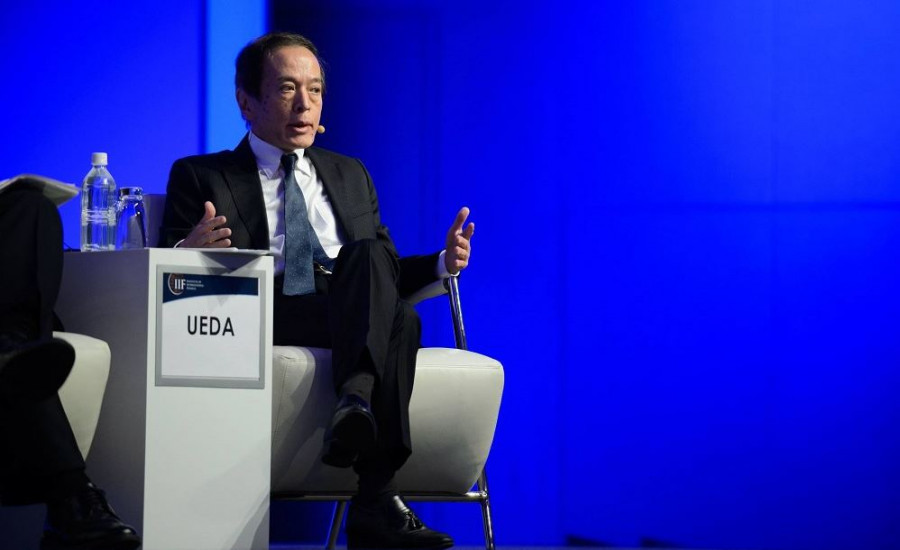The Bank of Japan kept all monetary policy parameters as they were in March, voicing dovish rhetoric. The regulator left the short-term interest rate on deposits of commercial banks at -0.1% per annum, the target yield of 10-year government bonds is about zero. In addition, the central bank has maintained the range within which the yield on 10-year government bonds can fluctuate—plus/minus 0.5%. We can say that the March meeting was of a "passing" nature, as the regulator voiced its usual rhetoric and retained all the parameters of monetary policy. But today was a notable event for the USD/JPY traders.
The end of an era
The fact is that today's meeting is the last under the leadership of Haruhiko Kuroda, who has led the central bank for the past 10 years. In such cases, they say "the end of an era"—and this is true, given that Kuroda consistently and throughout his entire term in office implemented a soft monetary policy.

The Bank of Japan remains the only central bank in the world with negative interest rates. Loose monetary policy caused the Japanese currency to collapse to a 32-year low last year, forcing the Japanese authorities to intervene in support of the yen. Despite rising inflation in Japan, Kuroda remained true to his conviction to the end—for example, today, he again announced the readiness of the central bank to take further steps towards easing the monetary policy. At the same time, the head of the regulator stressed that the positive effects of soft monetary policy "far outweigh the side effects." During his press conference, Kuroda advised his successor to continue easing monetary policy "to encourage companies to raise wages."
In fact, the main intrigue of the coming months lies precisely in this question: will Kuroda's successor maintain his course, or will he still decide on a gradual calibration? As you know, the Japanese parliament this week approved Kazuo Ueda as the next head of the central bank. He will head the Bank of Japan next month, on April 8, when Haruhiko Kuroda's term expires. The next meeting of the regulator's members (April 28) will be held under his leadership.
Is Ueda a Kuroda 2.0?
Ueda has repeatedly stated that he intends to continue to adhere to the large-scale monetary easing program of the Central Bank. In his opinion, the growth in consumer inflation is mainly due to rising import prices, not increased demand. He expressed confidence that price drivers "are likely to slow down soon" and inflation will fall below 2% by the end of this year. It's funny, but Ueda repeated word for word Kuroda's phrase that the advantages of the current monetary policy outweigh its disadvantages, at least for now.
And yet, despite such a dovish mood, market participants are still preparing for the fact that the new head of the Japanese regulator will follow the path of policy normalization.
Here it is necessary to emphasize one important nuance. Unlike Kuroda, Kazuo Ueda still allows the option of normalizing monetary policy parameters. On the one hand, Ueda repeated several times the thesis that today he does not question the policy pursued by the current head of the Bank of Japan. On the other hand, he noted that if trending inflation "strengthens significantly" and there is room for sustained achievement of the BOJ's target, the central bank may consider normalizing policy. At the same time, Ueda made it clear that if any changes are required in the future, these changes will be carried out slowly, consistently and smoothly: there will definitely be no sharp rate hikes in the spirit of the Fed.
In general, the results of the March meeting of the Bank of Japan are rather symbolic – this is the last accord of Haruhiko Kuroda, who has been at the helm of the Central Bank since 2013. The market expectedly ignored Kuroda's rhetoric, who again repeated the usual theses.
At the same time, we should not expect sharp movements and dramatic changes from Kuroda's successor, Kazuo Ueda. If he does decide to initiate any shifts in policy, it will not be until the second half of this year.
Conclusions
All this suggests that USD/JPY will follow the greenback for the foreseeable future, which, in turn, is gaining momentum against the hawkish statements of Fed Chairman Jerome Powell. The February Nonfarm Payrolls may strengthen the dollar's position, allowing buyers of USD/JPY to approach the borders of the 138th figure.
From a technical point of view, the pair on the D1 timeframe is between the middle and upper lines of the Bollinger Bands indicator, above all the lines of the Ichimoku indicator, except for Tenkan-sen. The current fundamental background contributes to the development of the upward trend, but longs should be opened after buyers consolidate above the mentioned Tenkan-sen line, which corresponds to 136.60. The main target of the upward movement in the medium term is 138.00, which is the upper line of the Bollinger Bands on the daily chart.













